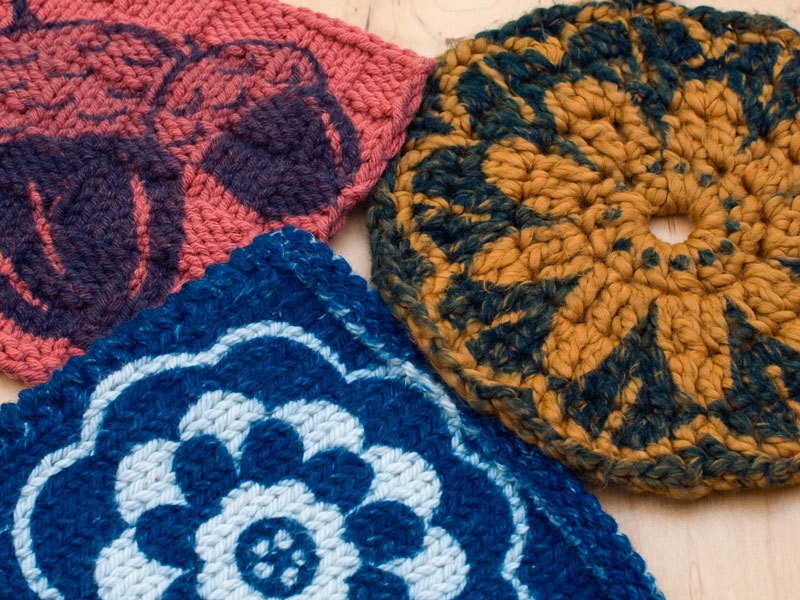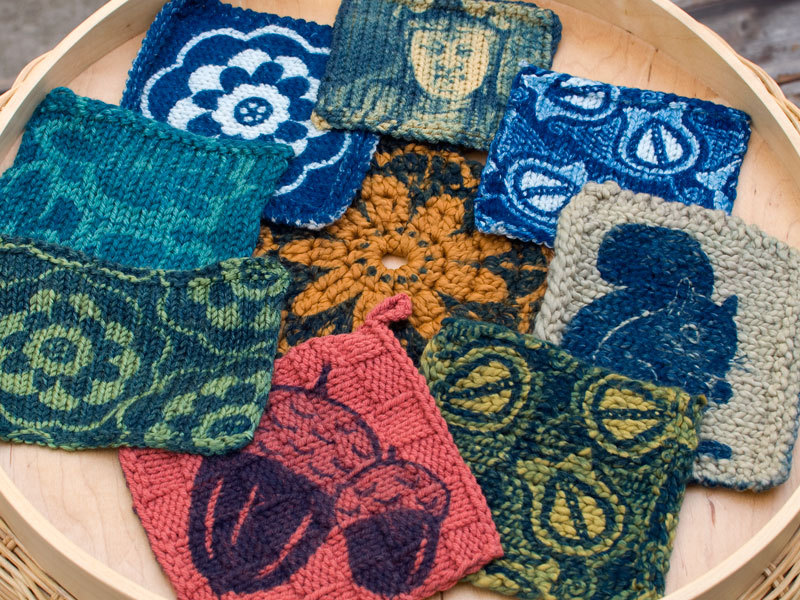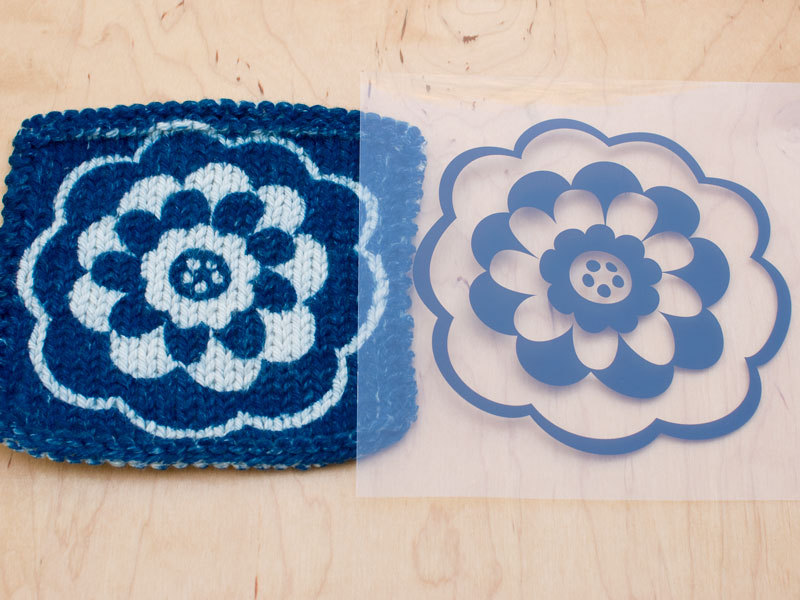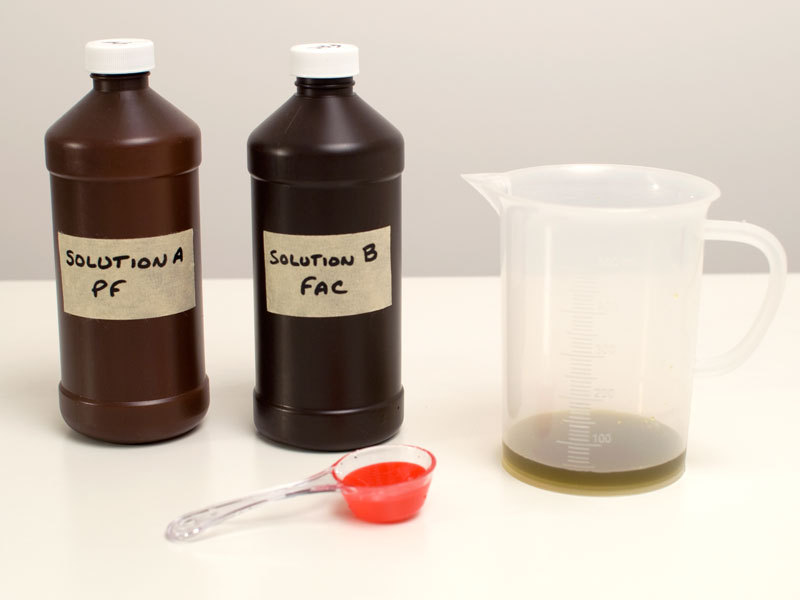Materials
- Knit or crochet piece for printing
- Digital artwork
- Computer graphics program
- Inkjet printer
- Inkjet transparency film, available at office supply & photo stores
- <a href=” http://stores.photoformulary.com/-strse-…>Original cyanotype kit</a, sold at photo stores
- Measuring cup, plastic or glass
- Measuring tablespoon, plastic
- Plastic tray or small tub
- 2″ foam craft brush
- White muslin scrap, or other lightweight cotton fabric, about twice as big as your knit piece
- Non-metal brayer, optional
- Rubber gloves
- Safety glasses and apron, optional – but a good idea!
- Plastic clothes hanger and clips or a drying rack
- Hairdryer or fan, optional
- Lightproof black plastic bag, optional
- Sheet of glass and backing board; a picture frame works well
- White vinegar
- Hydrogen peroxide











